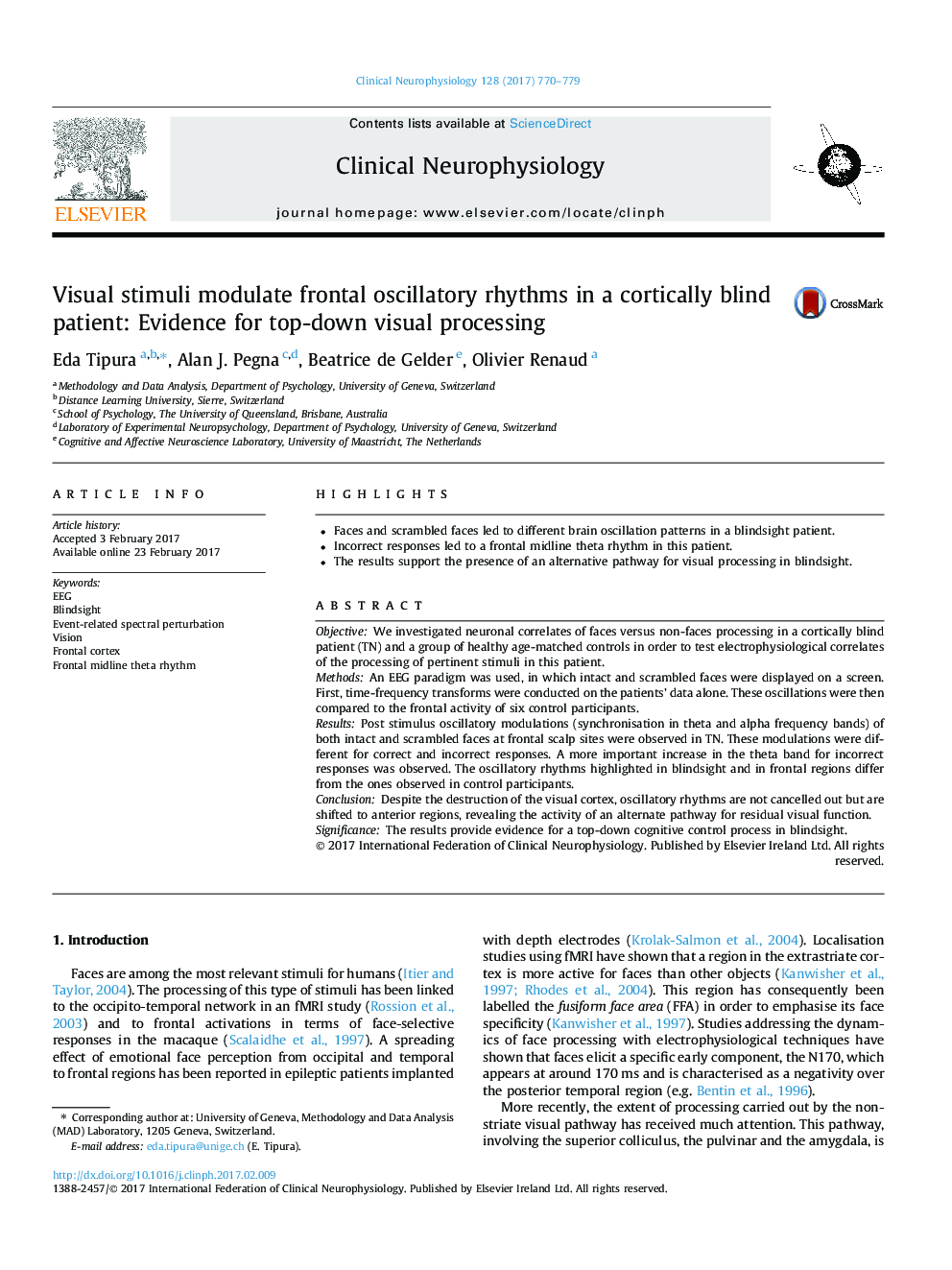| Article ID | Journal | Published Year | Pages | File Type |
|---|---|---|---|---|
| 5627677 | Clinical Neurophysiology | 2017 | 10 Pages |
â¢Faces and scrambled faces led to different brain oscillation patterns in a blindsight patient.â¢Incorrect responses led to a frontal midline theta rhythm in this patient.â¢The results support the presence of an alternative pathway for visual processing in blindsight.
ObjectiveWe investigated neuronal correlates of faces versus non-faces processing in a cortically blind patient (TN) and a group of healthy age-matched controls in order to test electrophysiological correlates of the processing of pertinent stimuli in this patient.MethodsAn EEG paradigm was used, in which intact and scrambled faces were displayed on a screen. First, time-frequency transforms were conducted on the patients' data alone. These oscillations were then compared to the frontal activity of six control participants.ResultsPost stimulus oscillatory modulations (synchronisation in theta and alpha frequency bands) of both intact and scrambled faces at frontal scalp sites were observed in TN. These modulations were different for correct and incorrect responses. A more important increase in the theta band for incorrect responses was observed. The oscillatory rhythms highlighted in blindsight and in frontal regions differ from the ones observed in control participants.ConclusionDespite the destruction of the visual cortex, oscillatory rhythms are not cancelled out but are shifted to anterior regions, revealing the activity of an alternate pathway for residual visual function.SignificanceThe results provide evidence for a top-down cognitive control process in blindsight.
